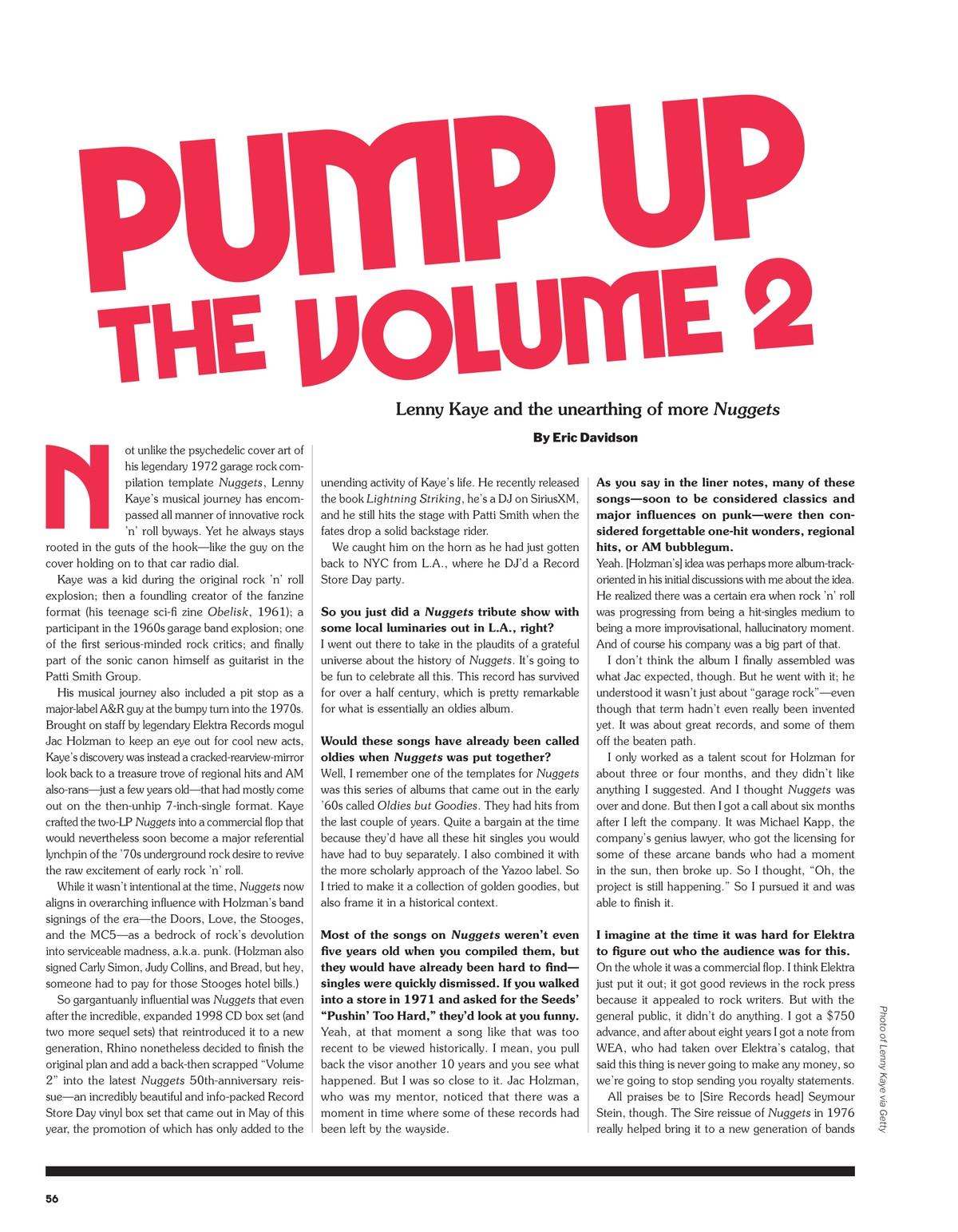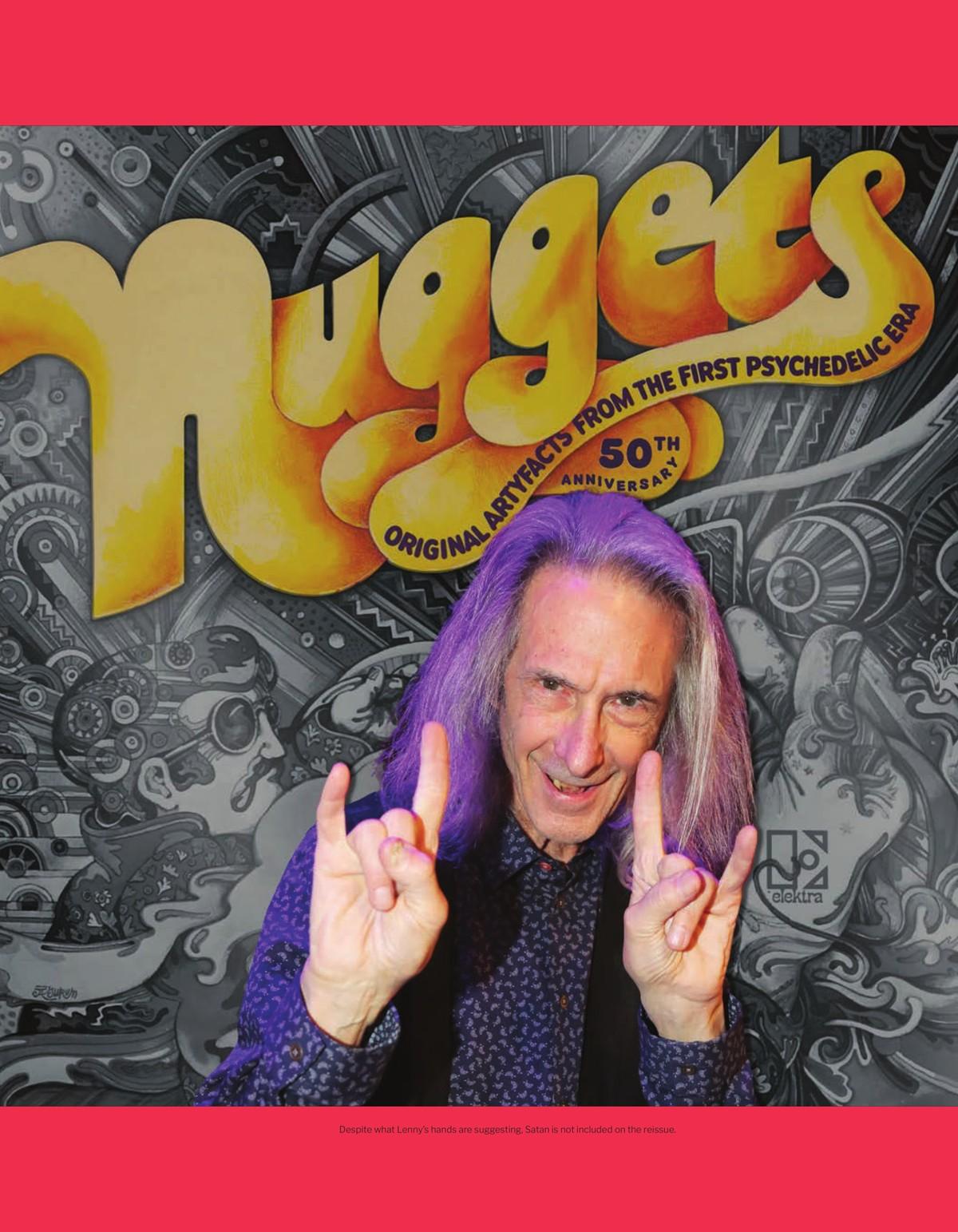PUMP UP THE VOLUME 2
Lenny Kaye and the unearthing of more Nuggets.
December 1, 2023


Not unlike the psychedelic cover art of his legendary 1972 garage rock compilation template Nuggets, Lenny Kaye’s musical journey has encompassed all manner of innovative rock ’n’ roll byways. Yet he always stays rooted in the guts of the hook—like the guy on the cover holding on to that car radio dial.
Kaye was a kid during the original rock ’n’ roll explosion; then a foundling creator of the fanzine format (his teenage sci-fi zine Obelisk, 1961); a participant in the 1960s garage band explosion; one of the first serious-minded rock critics; and finally part of the sonic canon himself as guitarist in the Patti Smith Group.

